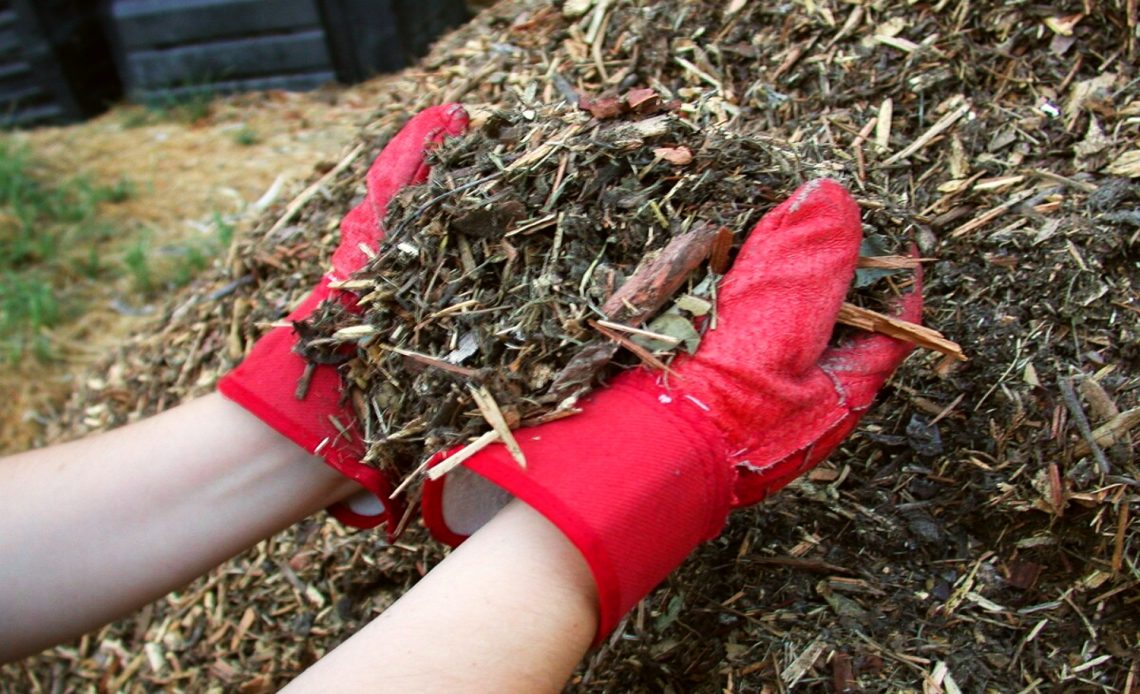

We’re here to help! Wild Yards is a completely free website that is 100% dedicated to helping you create a wildlife-friendly, sustainable yard. Read more
WildYards is reader-supported. When you buy a product through a link on our site, we may earn a comission. Every product is independently selected by our (obsessive) editors and our reviews are unbiased and objective. Read more about our mission or our privacy policy.
For many gardeners, mulch is an afterthought. But the right mulch can make all the difference in your garden’s performance.
Mulch protects the soil from the elements. It helps the soil maintain a steady temperature so your plants’ roots don’t get stressed.
It also locks in moisture, so you don’t have to water your garden as often. A little bit of mulch can help you save big on your water bill.
There are many benefits to using mulch in your vegetable garden. But what is the best mulch for vegetable gardens, and what are the benefits of using organic mulch in particular?
Organic mulch nourishes the soil as the materials break down over time. Mulching your garden seals in moisture, prevents weeds from sprouting, and can even help repel harmful insects.
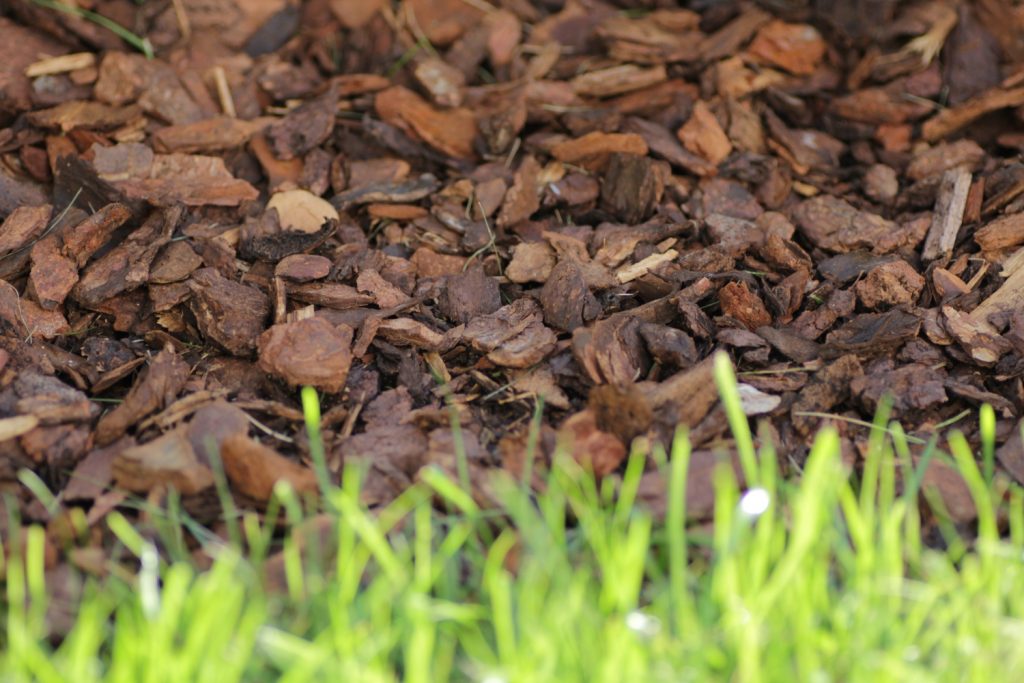
12 Best organic mulches to use in your vegetable garden
If you’re in the market for an organic mulch to spread around the plants in your vegetable patch, it can be difficult to narrow the field.
When it comes to choosing the right organic mulch for your garden, you don’t have to put in too much effort. Just use what you can find locally.
Don’t forget to keep your garden’s needs in mind, too.
If you’ve had trouble with pests in the past, look for a mulch that helps repel insects.
And if your garden’s soil has trouble with moisture retention, look for a mulch that holds onto extra water.
Understanding the growing conditions in your garden will help you choose the best organic mulch for your fruits and veggies.
Bark mulch
This is one of the most popular types of mulch because it’s easy to find.
Bark mulch is often made from pine trees since they’re fast-growing. Pine bark mulch is porous and soft, so it holds onto moisture and breaks down relatively quickly.
Of course, you can find other types of bark mulch, too. Cedar bark mulch is another popular choice and is tougher than pine bark mulch.
Cedar is a hardwood that’s resistant to rot, so this type of mulch lasts much longer than pine bark mulch. The downside to the slower decomposition rate is that cedar bark mulch doesn’t nourish plants quite as much.
But there are upsides to cedar bark mulch. Because it breaks down slowly, you can reuse the mulch for a few years before needing to replace it.
Cedar bark also contains camphor oil. This is what gives the bark its characteristic smell.
The camphor oil in cedar bark mulch helps ward off pesky insects, including spider mites and aphids.
Other bark mulches include birch, spruce, fir, and oak. Remember to choose a mulch made from trees that are native to your region.
Using the bark of trees that grow locally restores the right nutrients to the soil in your vegetable garden as the mulch decomposes.
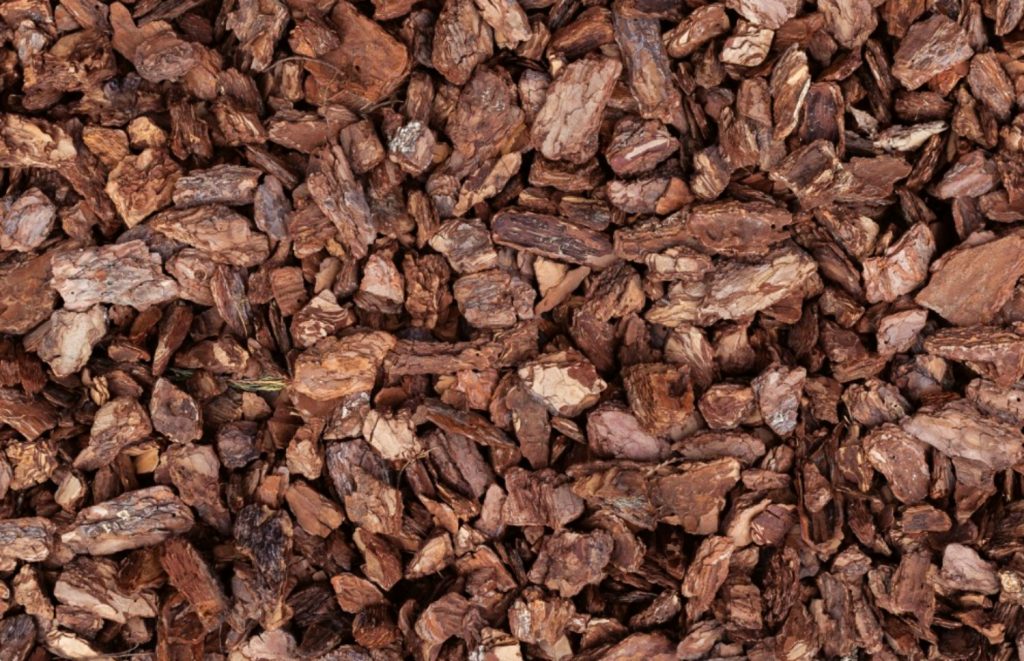
Compost
For small vegetable gardens, like those grown in containers, compost is a fantastic mulch.
You can make your own compost in a 5-gallon bucket. But you can also purchase bagged compost from your local garden center.
Compost is an excellent source of nitrogen, phosphorus, and potassium. Plants rely on these three elements more than anything else.
But compost is also a good source of trace minerals, like calcium, potassium, magnesium, copper, and zinc.
A good compost includes a 1:1 ratio of green matter, like grass clippings, leaves, and table scraps, and brown matter, like cardboard, shredded paper, and dead leaves.
As these materials break down, they help feed the plants in your garden.
Most gardeners choose to mix compost into their raised beds before planting their seedlings in spring. And that’s a great option because it gives a nutritional boost to the soil.
But you can also use compost as a mulch to protect the soil from the sun, to help the soil stay moist, and to provide a steady dose of nutrients to your crops as the mulch breaks down.
Husk mulch
Whether you use cocoa husks, rice husks, corn husks, or coconut coir, husk mulch is an eco-friendly option for your vegetable garden.
Husk mulch is made from the husks or hulls of certain seeds, fruits, and grains. It’s sustainable and typically easy to find.
This type of mulch is somewhat lightweight, so it’s also easy to work with.
Because husk mulch is porous, it allows water to pass through easily where it can reach your crops’ roots.
Husk mulch packs together tight to prevent the soil from losing moisture in the heat of the afternoon.
Similar to bark mulch, husk mulch provides plants with some nutrients as the materials break down.
And, like compost, husk mulch adds some structure to the soil over time, making it useful for amending sandy soils and overly moist soils alike.
Husk mulch is a utilitarian yet attractive choice of mulch for your vegetable garden, and also helps prevent excessive erosion.
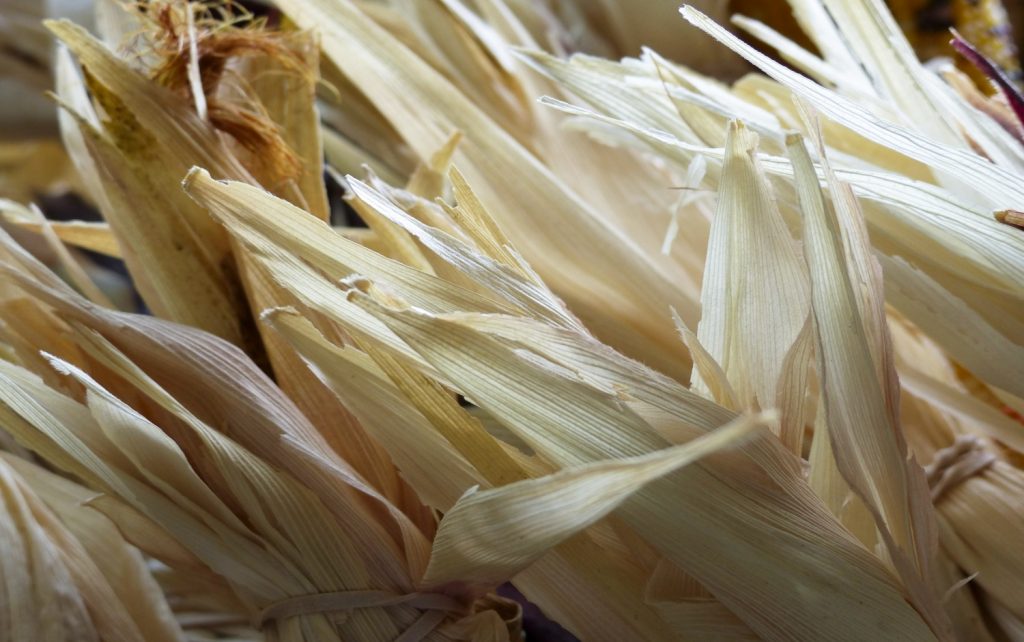
Manure
Fresh manure is often used to cover garden beds over the winter. But you shouldn’t use it as a fertilizer or mulch. It’s so high in nitrogen, it can burn your plants.
Aged manure, on the other hand, works very well as a mulch, especially for nitrogen-loving plants like tomatoes, peppers, and brassicas like broccoli.
Aged manure has a slightly looser texture than compost. It’s also very spongy. Once wet, it can help lock moisture into the soil to keep your plants hydrated in between waterings.
One thing to note about manure is that it breaks down relatively quickly. You may find you need to spread manure mulch two to four times in a single season.
Of course, if you raise your own cattle, pigs, horses, or other livestock, chances are, you’ve got so much manure on your hands, you’re just looking for ways to get rid of it. Using it as a mulch is a no-brainer.
Because manure is high in nitrogen, it’s important to test your soil at least once a season to avoid accidentally overfertilizing. Be sure to use other materials, like kelp meal, to balance out the nutrients and keep your plants happy.
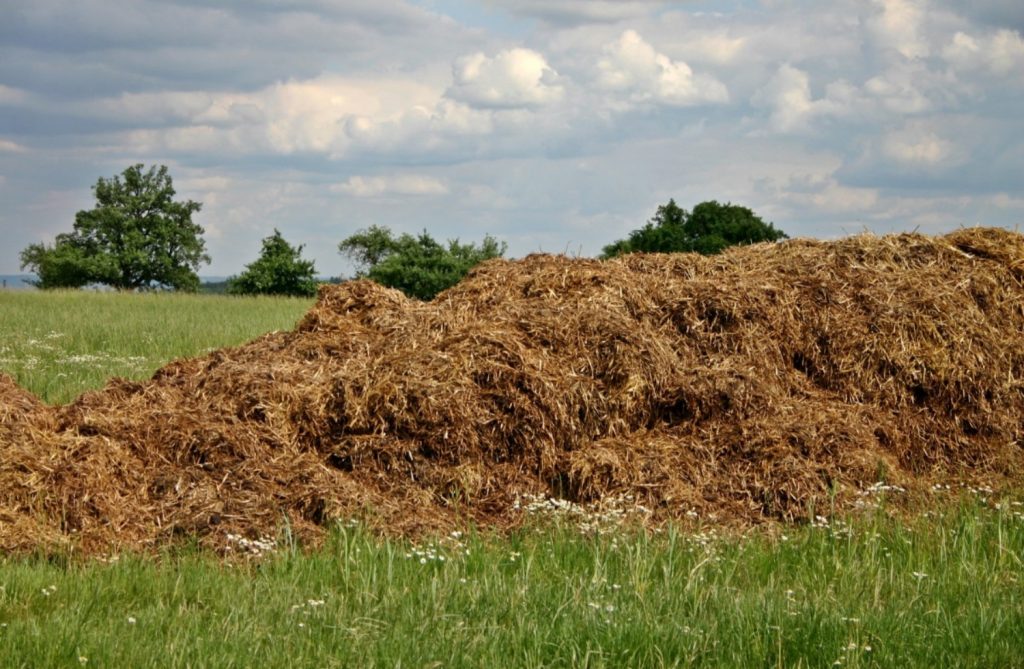
Straw and hay
If you raise livestock, you probably have old straw and hay laying around, too. And you can use that as mulch for your garden as well.
A dense layer of straw or hay around the plants in your vegetable garden works wonders for weed suppression.
Hay and straw also pack together nicely, to help protect the soil below from high temperatures, and to seal in moisture.
You can use hay and straw alone as mulch in your vegetable patch, or you can mix it with other materials, like manure and husk mulch, to protect the soil.
Using several mulch materials to create your own hybrid mulch works just as well. This will provide your plants with a greater variety of nutrients as the materials decompose.
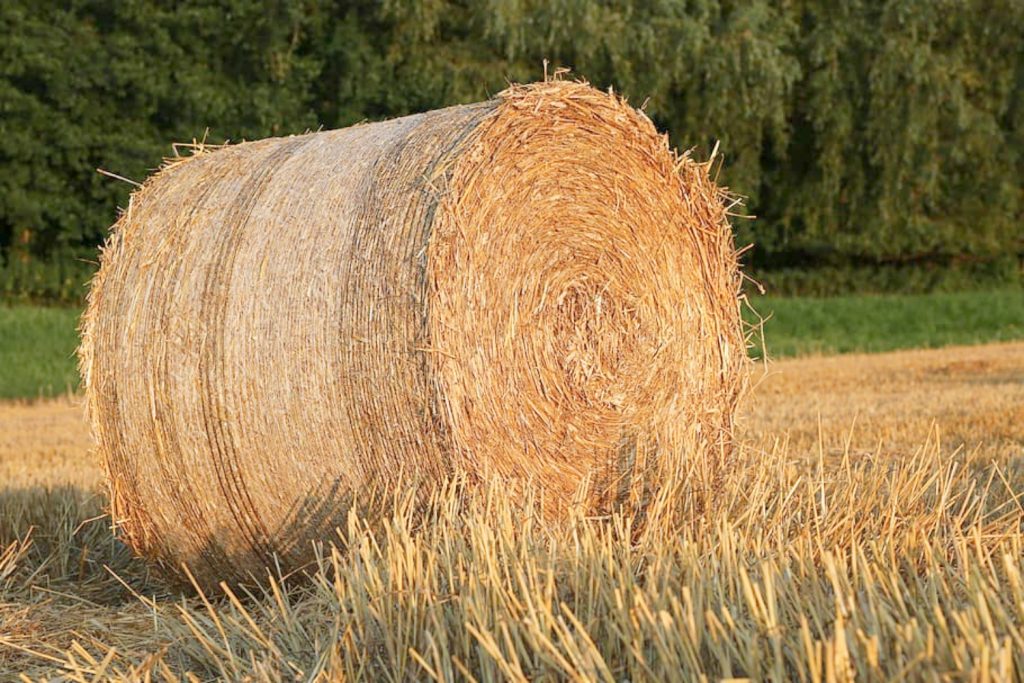
Cardboard
Justify all of those online purchases by using the leftover cardboard boxes as mulch for your garden.
Cardboard is great for your garden. Small pieces worked into the soil help break things up, making it easier for plants to take root.
Shredded cardboard also supports moisture retention and promotes good drainage. If your garden’s soil stays too wet or too dry, adding some bits of cardboard can greatly improve its structure.
But even when spread over the top of your soil, cardboard has some benefits to offer.
Laying flattened boxes over the top of the soil blocks out the sun, so weeds can’t sprout.
Because cardboard is porous, it allows water to pass through to the soil, yet acts as a barrier, preventing rapid evaporation.
You may find that your cardboard mulch flaps in the wind. Use stones or bricks to weigh the mulch down.
You can also spread wood chip mulch or compost over the top of a layer of flattened cardboard boxes. This has several benefits.
For starters, it weighs the boxes down so they don’t blow away. But the moisture from the compost kickstarts the decomposition process, allowing the cardboard to break down more quickly and add structure to the soil.
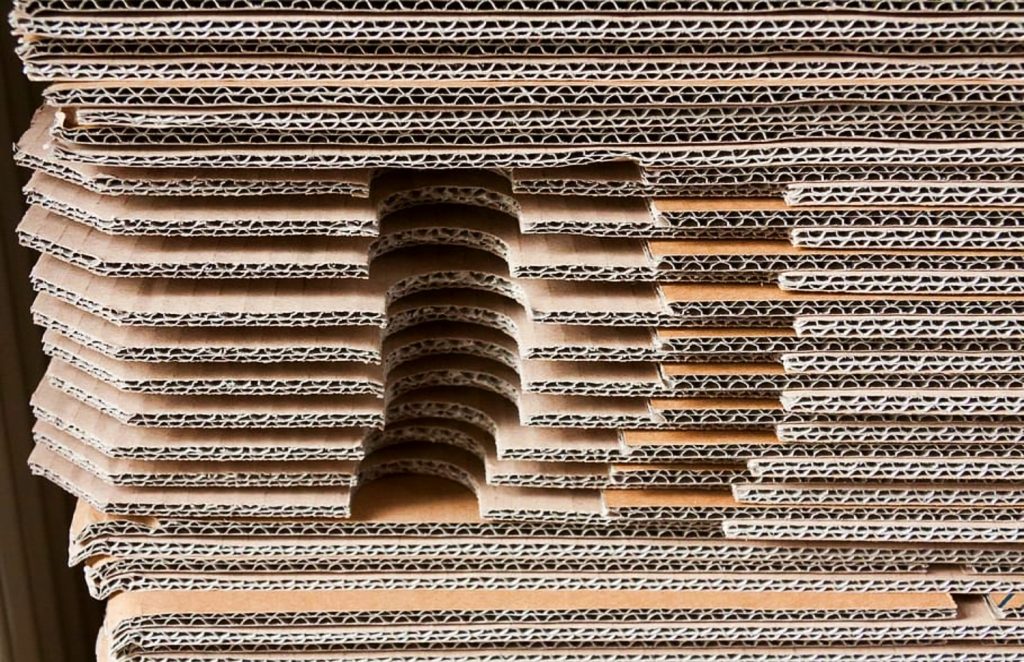
Leaf litter
Put all of the piles of leaves you raked up last fall to good use. Leaf litter that is at least 9 months old makes a fantastic mulch.
A thick layer of leaves helps the soil retain moisture. As the leaves break down, they provide the plants in your garden with valuable vitamins and minerals.
Leaf litter also feeds the beneficial microbes in the soil.
Supporting the healthy bacteria that live in the soil enhances nutrient availability. These bacteria have a symbiotic relationship with plants, feeding off the plant’s decaying leaves, fruits, and other materials, while simultaneously supporting the plant’s immune system.
A healthy soil microbiome keeps your crops healthy so you get plenty of delicious fruits and vegetables to enjoy at harvest time.
Leaf litter is also attractive to beneficial insects, especially worms.
Vermicompost has many benefits for the plants in your garden. Like the microbes in the soil, worms make nutrients easier for plants to absorb.
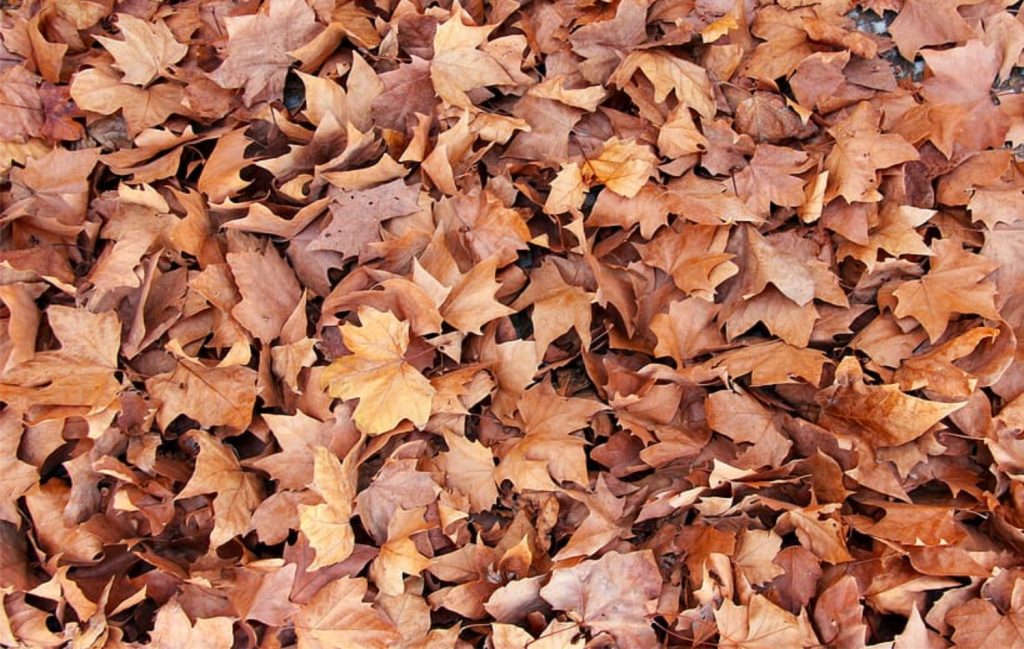
Wood chips
A thick layer of wood chip mulch suppresses weeds, preventing them from robbing valuable nutrients from the plants in your garden.
Because wood chips are small and thin, they break down quickly. You’ll likely need to replace them annually to ensure the soil stays protected.
Although wood chips tend to break down rapidly, this can be a good thing if your soil lacks structure. Wood chips help break up clay-rich, overly compacted soil so plants can take root more easily.
Wood chips can be beneficial for loamy soils, too. They help make the soil more porous to optimize water retention while also improving drainage.
Again, if you have livestock, you probably already have wood chips at your disposal.
It’s safe to use soiled wood shavings from stables and stalls as mulch for your vegetable garden. Just be sure to mix the wood shavings with straw, hay, husks, and dead leaves.
Soiled wood shavings can contain ammonia from urine. Mixing the wood shavings with “clean” materials will dilute the urine so it doesn’t burn your plants.
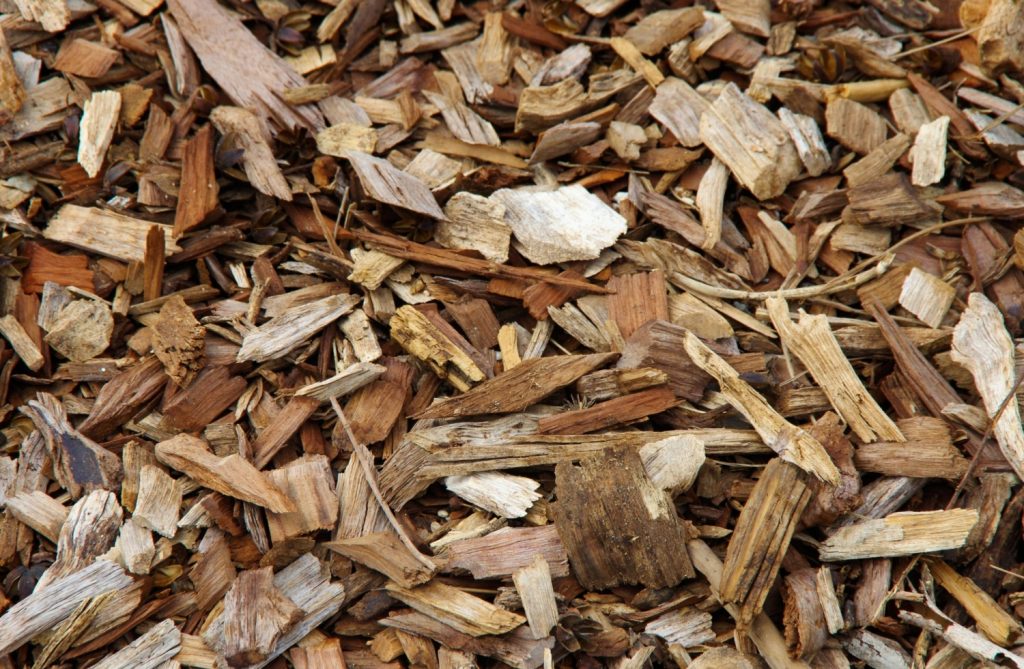
Lawn clippings
You don’t have to rake up the clippings when you’re done mowing. Leaving the trimmed grass in place provides food for the turf as it breaks down.
But you can certainly rake up those lawn clippings and use them as organic mulch in your vegetable garden if you’d like.
Like hay, lawn clippings pack together to create a thick carpet, an impenetrable barrier for most weeds.
Lawn clippings also help the soil retain more moisture. If you want to cut down on the amount of water you use in your garden, applying lawn clippings as mulch will help you meet that goal.
Old lawn clippings that have dried and turned brown will work just fine.
But day-old lawn clippings that are still nice and green will give the plants in your garden a small dose of nitrogen that will allow them to produce healthy, new foliage.
The more leaves your plants can produce, the more food they can provide for themselves. When all of your crop’s energy needs are met, the plants can focus on producing more flowers and fruits.
Just don’t forget to feed your plants a high-phosphorus fertilizer, like bone meal, too, to balance out the nutrients and keep them producing.
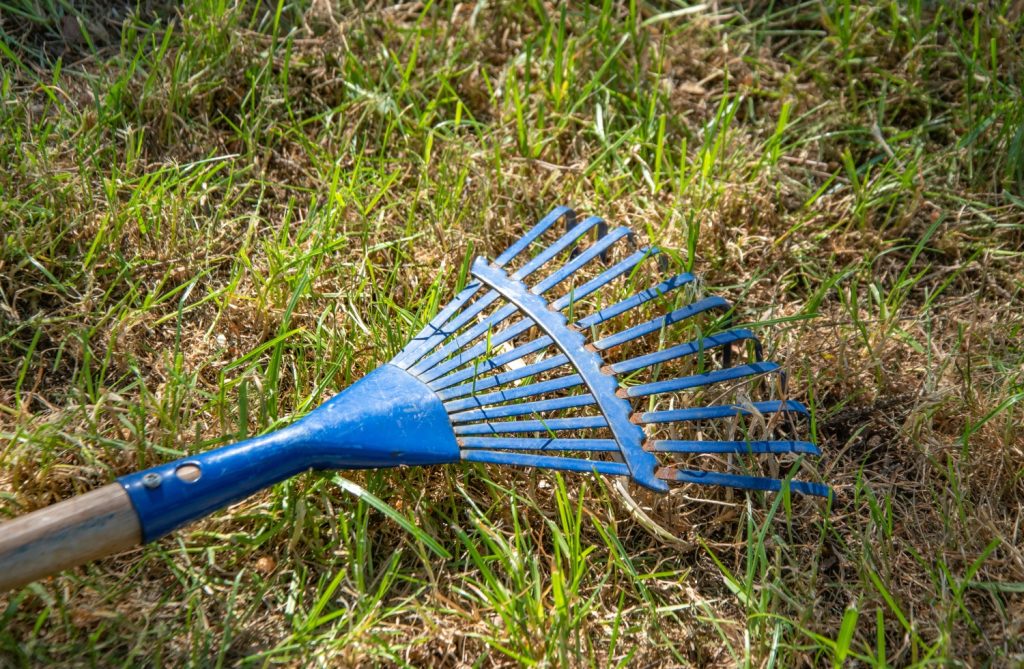
Burlap
Burlap sacks, such as those used for rice, coffee beans, seeds, and potatoes, can also be used as mulch.
This fibrous material is renewable and 100% environmentally friendly because it’s made of jute.
Burlap fabric is somewhat similar to coconut coir in that it is open and airy, yet the extra pore space means it acts as a sponge when wet.
Burlap is like a thicker layer of weed fabric, allowing water to pass through while also preventing the sun’s harsh rays from evaporating too much too quickly.
As the burlap fibers disintegrate, they add structure to the substrate and help feed the bugs in the soil.
Consider introducing some live earthworms to your garden before laying the burlap down. They’ll help improve soil quality for the plants in your garden.
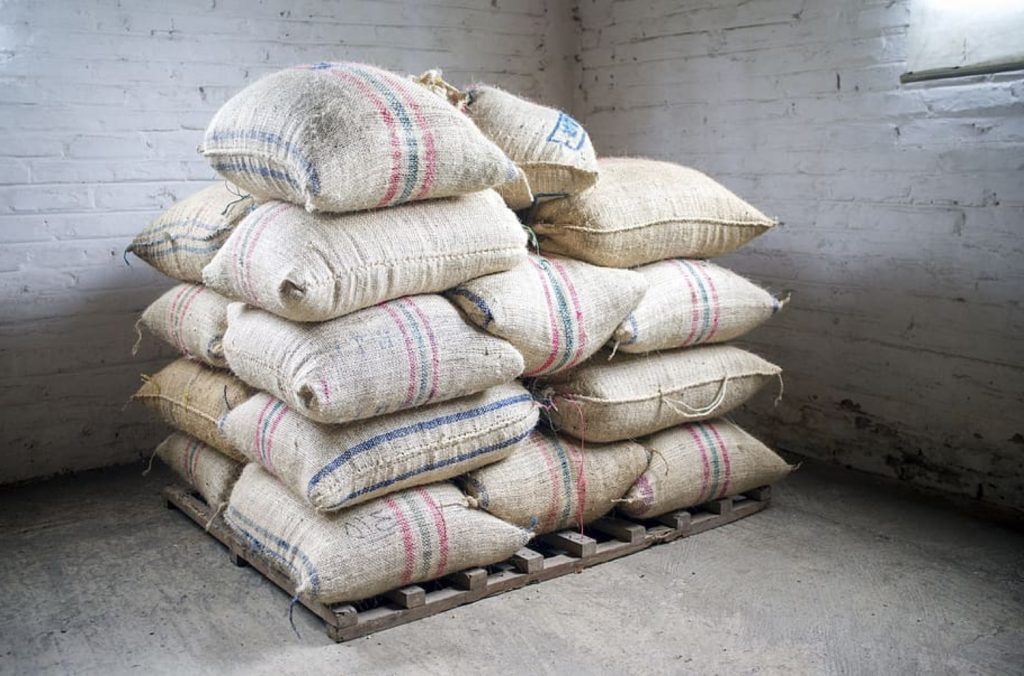
Newspaper
Once you’re done reading the funnies, take those old newspapers out to your vegetable patch and use them as mulch.
You can use newspaper as mulch by laying it flat and weighing it down with rocks or clumps of dirt, or by layering another layer of mulch, like compost or wood chips, on top of it.
If you’re super committed, you can shred the newspaper and use that instead. Shredded newspaper can be mixed with other mulching materials to stretch them further.
One of the benefits of using newspaper as mulch is that it’s inert. It will add fiber to the soil, which will give it structure. But because newspaper is not a significant source of nutrients, it won’t alter the NPK ratio of your soil.
Newspaper is also fantastic for mulching small container gardens. You can use as much as you need, then add the rest to your compost heap.

Honorary mention: Gravel
If you’re looking for mulch that won’t break down, choose gravel. Although gravel is not an organic mulch, since it does not come from living organisms and cannot break down, it does not contain any harmful chemicals, either, so it can safely be used as mulch in your garden.
Unlike compost, leaf litter, and other biodegradable mulches, gravel mulch doesn’t need to be replaced over time. Simply set it and forget it.
If you’ve already amended your garden’s soil, using gravel as a mulch will help protect your plant’s roots and prevent weeds from popping up without feeding your plants
Gravel won’t upset the delicate nutrient balance of your garden’s soil.
Additionally, if your garden’s soil tends to stay a bit too moist, using gravel as mulch will help keep things dry.
Gravel doesn’t pack together like hay, husks, or bark. Instead, it allows for good airflow to the ground below, allowing the soil to dry out slightly.
This helps prevent mold and mildew from developing in loamier soils.
Gravel is a great choice of mulch for cacti and succulents, but heat-loving plants like rosemary and lavender benefit from this type of mulch, too.
Using gravel (or even hydroton clay pebbles) as mulch keeps the soil warmer. Gravel retains more heat than other types of mulch, so it’s also useful for spring and fall gardens.
What are the benefits of using organic mulch?
You know mulch is good for your garden. But what makes organic mulch so great?
Overall, organic mulch offers more benefits to your vegetable garden, including the following:
- Better water retention: Mulch helps lock in moisture by absorbing the drying heat of the sun’s rays.
- Improved drainage: Porous mulch materials, like coconut coir, act as a sponge, absorbing excess water and allowing it to be released more slowly, so the plants in your garden stay hydrated without developing root rot.
- Temperature regulation: A thick layer of mulch acts as insulation for the plants in your garden. Using mulch protects your plant’s roots so they stay warm, but not too warm when the mercury drops, and cool, but not too cool when temps start to rise. It’s a great addition to spring and fall gardens because it gives seedlings extra protection.
- Weed suppression: Gardening can be fun, but make no mistake — it’s also a lot of work, too! Mulch helps snuff out weeds before they sprout, so they can’t deprive your crops of valuable nutrients.
- Steady nutrient release: Speaking of nutrients, many organic mulch materials, like compost, manure, and leaf litter, provide the plants in your garden with a broad spectrum of trace minerals as they break down. Nutrients like magnesium, calcium, manganese, iodine, and selenium play a role in a variety of processes, from energy production to respiration to reproduction.
- Improved soil structure: As biodegradable mulches break down, their fibrous matter remains, making loose soils firmer, and compacted soils more porous. Better soil structure makes it easier for plants to develop strong root systems.
- Better soil microbiome: Organic mulches nourish the soil and improve its structure, creating an ideal environment for beneficial bacteria. Like those shocking orange mushrooms you find growing in your backyard, these bacteria may seem like a bad thing, but they’re actually great for your plants. These bacteria help your plants ward off insects and diseases so they can flower more and produce loads of delicious fruits for you and your family to enjoy.
Although non-organic mulches like rubber and plastic mulch offer longevity, they’re made from synthetic materials that can leach harmful chemicals into the soil.
These chemicals can be damaging not only to the plants in your garden but also to the beneficial bacteria in the soil. They’re bad news for your local waterways, and your local ecosystem as a whole.
Mulches made from synthetic materials can also be challenging to dispose of, as some waste management companies do not consider them recyclable.
But organic mulches decay over time. Although they may need to be replaced, they’re much easier to get rid of if/when you need to since they can simply be incorporated into the soil.
Tips for using mulch in your garden
For best results, apply mulch evenly in a one to four-inch layer. Use more mulch to cover sandy soils that tend to stay dry, and use less mulch for loamy soils that tend to stay damp.
Pull the mulch away from each plant’s root collar. This supports good air circulation, preventing fungal infections and root rot.
Do not use organic materials that have been treated with pesticides, fungicides, or fertilizers. These chemicals may pose a threat to the plants in your garden.
Lastly, be sure to fertilize your garden properly before applying the mulch. Test your soil, and use organic fertilizers, especially those high in nitrogen, like blood meal, to keep your plants well-fed.
Some materials, like dead leaves, pull nitrogen from the soil as they break down. Increasing nitrogen in the soil will help keep your plants happy as the materials biodegrade.
Using organic fertilizers in your vegetable garden will help you save time and labor, all while supporting the health of your crops.
